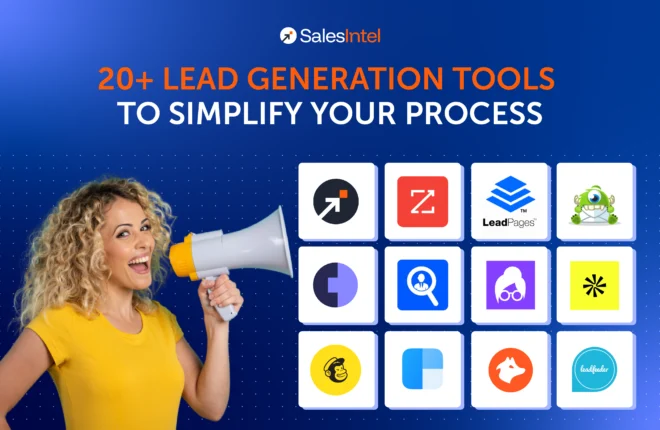We all want to put our buyers at the heart of our marketing, sales, and customer service. However, you need to make sure you are on the right path to understanding them.
Many marketers and sales reps try to convince prospects while keeping the product at the core. They miss the buyer side of the equation – how they think while purchasing the product, what they want to hear from you, what challenges they are facing, and how your product will help them grow.
The buyer’s perspective depends on the type of product, duration of the sales cycle, company’s firmographic and technographic specifics. Although many factors influence each individual buying journey, there are universal steps they all experience every time.
To understand how your customers think, let’s analyze the likely process they go through before they buy.
Interpreting the Buyer’s Thought Process
The buyer’s journey is an essential framework for a marketing strategy—but what does it look like? How are the buyers progressing from stage one to a justified, final decision? How do marketers and sales reps use this insight about the sales cycle of the customer?
Let’s quickly run through each stage of the buyer’s buying journey.

Awareness
This does not mean brand awareness or product awareness. Instead, this stage is about making your buyers aware of their challenges, pain areas, and needs. You are helping them to realize the problem, understand the issue, and take the next action. You can use articles and videos to educate your audience about their pain areas.
Consideration
This stage is about shifting your prospects from ‘I know about this’ to ‘I am looking to do something about this.’ To do so, they need to learn about addressing their challenges. They will analyze the different alternatives, including sticking to the status quo, tackling the problem on their own, and buying one of the potential products available if the job becomes too challenging.
Decision
This stage is crucial as the buyer has decided to solve the problem with a purchase. It’s time to choose the vendor. Tell them how you have helped other organizations to solve similar challenges. Don’t pressure the sale. Be consultative and guide them through solving their problem and give an expected ROI.
Although each buyer may not reach their decision the same way as other buyers, they will go through all these stages of the buyer’s journey.
Marketers and Sales Reps Often Get it Wrong
For marketers and sales reps who have been trained to focus on the sale above all else, it’s daunting to change their mindset. They have to unlearn their old habits. And it starts by understanding how buyers make their purchasing choices.
But making your buyers follow the buyer’s journey without knowing where they stand can lose you the opportunity. If the buyer knows what they should do then don’t waste your time explaining why they should do it. Not every buyer will have to start from the first step every time.
A Buyer Can Enter the Buyer’s Journey at Any Stage
There is no rule to suggest that the buyer must make progress step-by-step through the whole journey. There’s still a chance to abandon the journey at any moment, move back a stage, or jump right to the end within an hour.
People are difficult, and customers are complicated. They may not predictably go down the same road. Having content easily available for each stage and being flexible once the conversation starts will help your buyer stay comfortable and engaged.
You may come across buyers who have shown a keen interest in buying but stretch the sales cycle due to a lack of awareness about the problem’s severity.
For instance, if you are running a SaaS business, you may face a situation where a mid-level technical person (say, a technical team lead) has identified the challenge and approached you for a solution. Going forward, he fixed a meeting with the higher management. Now, higher management wants to know if it is necessary (awareness), is there any other way available to get it done (consideration), and how your product can ensure a good ROI for them (decision).
You cannot say firmly when your buyer is ready to buy.
Decoding Buying Signals Using Intent Data
The primary reason why sales reps fail to convert the potential buyers is wrong timing. Sales reps are often tempted to close the deal if they see a positive response at the first call. Same with the marketing team while they are generating leads through cold email marketing. They often jump directly from the first step to the last step, and so miss the opportunity.

Buyer Intent Data is processed information about purchasing signals. It analyzes online events and studies behavioral data from a company that statistically suggests a transaction will happen quickly as they have already started the buyer’s journey.
Intent data helps prioritize your sales and marketing outreach because you know who’s ready to buy.
Marketing and sales departments may address a specific profile with this information to maximize the possibility of a buying decision. Also, it’s not enough to meet or touch your leads at the right time and location, but you still need to reach them with the necessary messaging to overcome their unique problems.
By using Intent Data to determine where the prospects are on their buyer’s journey, it is possible to tailor communications and strategies that are more accurate to individual needs and contexts.
Using Intent Data allows you to personalize your messaging. Address exactly what the prospect will gain rather than send generic messages that won’t readily resonate or convert.
With multiple aggregated intention signs, companies can identify “ready-to-purchase” customers and adapt their strategies accordingly.
Using SalesIntel to Identify the Buying Signals
With SalesIntel, you have access to reliable and detailed B2B data that includes contact, firmographic, and technological information about your ideal customers as well as access to Intent Data.
Intent Data from SalesIntel will help you know your best prospects by discovering and understanding the topics that are being regularly investigated across individual accounts at a company. SalesIntel has streamlined intent data queries in our B2B data portal so that you can easily get the data you need to find a customer primed for a sale, contact decision-makers, and close the deal.





